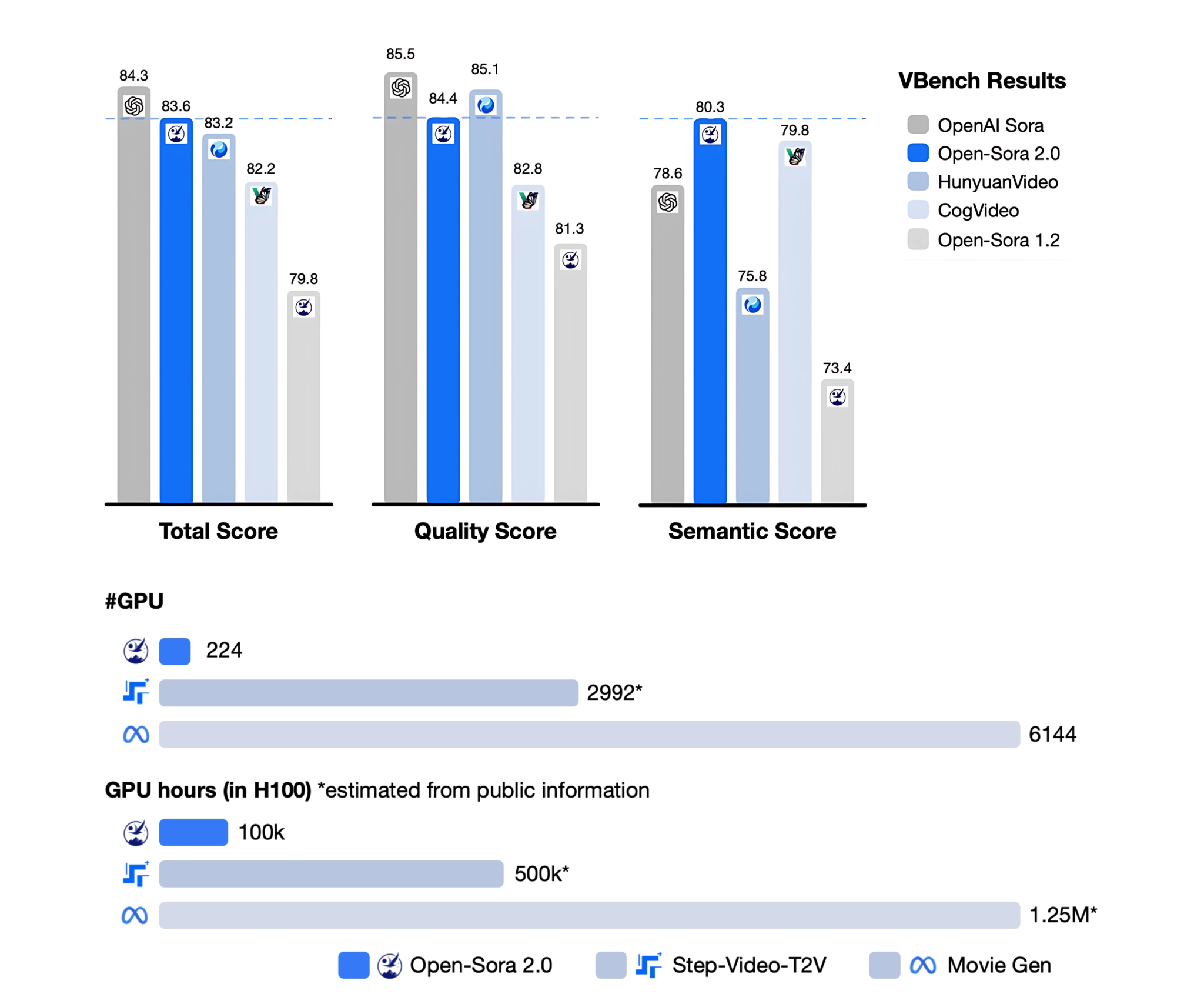
AI-Generated Video Solutions for Businesses
AI-generated videos from text descriptions or images offer remarkable opportunities for content creation, media production, and entertainment. Recent advancements in deep learning, particularly through transformer-based architectures and diffusion models, have significantly enhanced this technology. However, training these models is resource-intensive, requiring large datasets, substantial computing power, and significant financial investment. This limits access to advanced video generation technologies, mainly to well-funded research groups and organizations.
Challenges in AI Video Model Training
Training AI video models is both costly and computationally demanding. High-performance models necessitate millions of training samples and powerful GPU clusters, making development challenging without substantial funding. Large-scale models, such as OpenAI’s Sora, elevate video generation quality but require enormous computational resources. These high training costs restrict access to advanced AI-driven video synthesis, hindering innovation to a select few major organizations. Addressing these financial and technical barriers is crucial for broader adoption of AI video generation.
Innovative Approaches to AI Video Generation
Various strategies have emerged to manage the computational demands of AI video generation. Proprietary models like Runway Gen-3 Alpha offer optimized architectures but are closed-source, limiting broader research contributions. Open-source alternatives like HunyuanVideo and Step-Video-T2V provide transparency yet still require significant computing power. Many of these models utilize extensive datasets, autoencoder-based compression, and hierarchical diffusion techniques to improve video quality. Each approach presents trade-offs between efficiency and performance, with some models focusing on high-resolution output while others prioritize lower computational costs.
Introducing Open-Sora 2.0
The HPC-AI Tech research team has developed Open-Sora 2.0, a commercial-level AI video generation model that achieves state-of-the-art performance while significantly reducing training costs. With an investment of only $200,000, it is five to ten times more cost-efficient than competing models like MovieGen and Step-Video-T2V. Open-Sora 2.0 aims to democratize AI video generation, making high-performance technology accessible to a broader audience through innovative efficiencies.
Key Innovations of Open-Sora 2.0
This model incorporates several efficiency-driven innovations, including:
- A hierarchical data filtering system that refines video datasets into progressively higher-quality subsets for optimal training efficiency.
- The Video DC-AE autoencoder, which enhances video compression while minimizing the number of tokens needed for representation.
- An architecture that uses full attention mechanisms, multi-stream processing, and a hybrid diffusion transformer approach to improve video quality and motion accuracy.
- A three-stage training pipeline that optimizes learning from low-resolution data to high-resolution fine-tuning, allowing the model to grasp complex motion patterns effectively.
Performance Evaluation
Open-Sora 2.0 was rigorously tested across multiple dimensions, including visual quality, prompt adherence, and motion realism. Human evaluations indicated that it outperforms both proprietary and open-source competitors in at least two categories. In VBench evaluations, the performance gap between Open-Sora and OpenAI’s Sora decreased from 4.52% to just 0.69%, showcasing significant advancements. Open-Sora 2.0 also achieved a higher VBench score than HunyuanVideo and CogVideo, solidifying its position as a leading open-source model.
Conclusion and Next Steps
Key takeaways from the Open-Sora 2.0 research include:
- Training cost of just $200,000, making it significantly more cost-efficient than similar models.
- A hierarchical data filtering system that enhances training efficiency.
- The Video DC-AE autoencoder reduces token counts while maintaining high reconstruction quality.
- A structured three-stage training pipeline that optimizes data learning.
- Human evaluations indicate superior performance compared to leading models.
- Advanced optimizations that maximize GPU efficiency and minimize hardware overhead.
Open-Sora 2.0 demonstrates that high-performance AI video generation can be achieved at controlled costs, making the technology more accessible to researchers and developers globally.
Explore AI’s Potential in Your Business
Consider how artificial intelligence can transform your work processes. Identify areas for automation and moments in customer interactions where AI can add value. Establish key performance indicators (KPIs) to ensure your AI investments positively impact your business. Choose tools that meet your specific needs and allow for customization. Start with a small project, evaluate its effectiveness, and gradually expand your AI applications.
If you need assistance managing AI in your business, contact us at hello@itinai.ru. Connect with us on Telegram, X, and LinkedIn.



